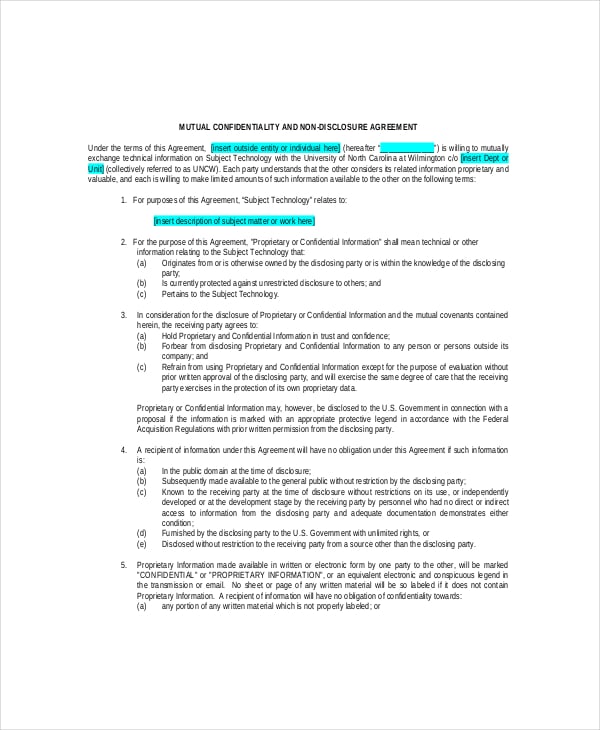
A mutual confidentiality agreement, also known as a non-disclosure agreement (NDA), is a legal contract between two or more parties that outlines the terms and conditions for sharing confidential information. It is a vital tool for protecting sensitive information and trade secrets in various business transactions, partnerships, or collaborations. The agreement ensures that all parties involved understand their obligations and responsibilities when it comes to keeping confidential information secure and preventing its unauthorized disclosure.
Why Do You Need a Mutual Confidentiality Agreement?
In today’s highly competitive business environment, protecting sensitive information has become more critical than ever. Whether you are a startup seeking investment, a business collaborating with another company, or an individual sharing proprietary information, having a mutual confidentiality agreement in place is essential for several reasons:
- Protection of Intellectual Property: A mutual confidentiality agreement safeguards your intellectual property rights by preventing unauthorized use, disclosure, or theft of your valuable information.
- Establishing Trust: By signing a mutual confidentiality agreement, all parties involved demonstrate their commitment to maintaining confidentiality, which helps build trust and confidence in the business relationship.
- Preventing Competitive Advantage: The agreement ensures that confidential information remains confidential, preventing competitors from gaining an unfair advantage by accessing your trade secrets or proprietary data.
- Legal Recourse: In the event of a breach of the agreement, having a mutual confidentiality agreement provides a legal framework for seeking remedies, damages, or injunctions to protect your rights.




How to Draft a Mutual Confidentiality Agreement
While it is advisable to consult with a legal professional when drafting a mutual confidentiality agreement, here are some key elements that should be included:
- Definition of Confidential Information: Clearly define what constitutes confidential information and specify the types of information that are excluded from the agreement.
- Obligations of the Parties: Outline the responsibilities and obligations of each party regarding the handling, use, and protection of confidential information.
- Duration of the Agreement: Specify the duration of the agreement, including the start and end dates or any conditions under which the agreement may terminate.
- Exceptions: Identify any exceptions or circumstances where disclosure of confidential information is allowed, such as with the written consent of the disclosing party or in compliance with a court order.
- Remedies for Breach: Clearly state the remedies available in case of a breach, such as monetary damages, injunctive relief, or specific performance.
- Confidentiality Obligations Post-Termination: Specify the obligations of the parties even after the termination of the agreement, particularly regarding the return or destruction of confidential information.
Final Thoughts
A mutual confidentiality agreement is an essential tool for protecting sensitive information and maintaining trust in business relationships. By clearly defining the obligations and responsibilities of all parties involved, such an agreement helps safeguard valuable intellectual property and prevents unauthorized disclosure. When drafting a mutual confidentiality agreement, it is advisable to seek legal advice to ensure all necessary elements are included and properly addressed. Remember, prevention is always better than cure when it comes to protecting confidential information.
Mutual Confidentiality Agreement Template – Word